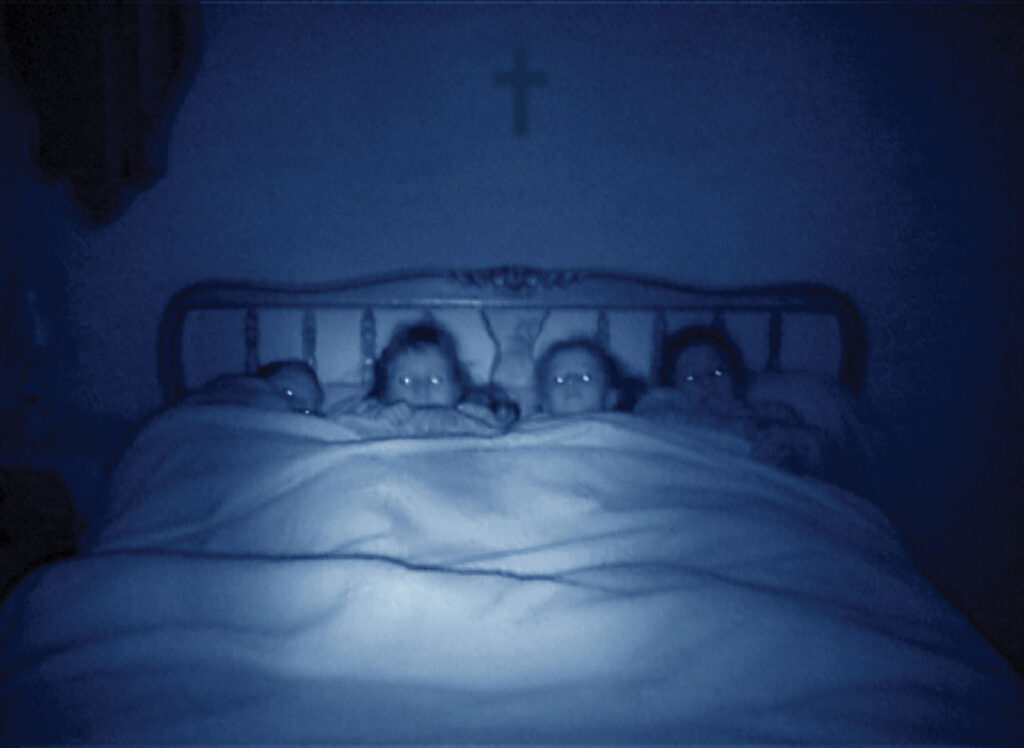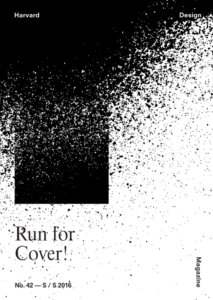Wide Open
The human face is the first surveillance technology, the original screen and readout of danger. When a suspicious blur crosses our visual eld, eyebrows shoot up and pull in, upper eyelids lift as high as they can, nostrils are, lips tighten, and the jaw may drop. Heat maps show blood owing away from pallid cheeks and toward the eye muscles. Neurologist Duchenne de Boulogne, who practiced before the invention of anesthesia, described a patient awaiting surgery whose “eyeball seemed to be chased from its orbit.” Unlike anywhere else in the body, muscles on the face are attached directly to the skin, and their movements are easily detected. Biological signals tend toward exaggeration. A eeing deer will lift its tail to ash an almost foot-long patch of white, signaling others to beat a hasty retreat. Humans unveil big sclera, or whites of the eyes, and a clear view of where the eye is pointing.
Intrepid bungee jumpers and skydivers are dismayed to see the “fear face” in pictures taken by their GoPro cameras. Visitors to haunted houses know that they are safe, but hidden cameras show them looking scared witless. The facial expression of fear is automatic. In brain imaging studies, we have learned that a picture of a fear face triggers activity in the amygdala, a brain region involved in emotion and fear learning. The amygdala res even when faces are ashed so quickly that the person is not aware of seeing them, and when just the enlarged sclera are shown. Facial expressions gain potency by acting viscerally as well as visually. Instruments measuring subtle electrical activity in facial muscles show that people mimic the expressions of others, offering a quick and dirty route to emotion contagion. An altruist can sense fear a mile off, and the cold-blooded psychopath may barely register the look of fear in his or her victim’s eyes, but most people just feel the fear and spread it.

“Form ever follows function,” said Louis Sullivan. Darwin presumed that this was true of facial expression. Fear is a product of brain intelligence, of the brain’s homeland security department. When danger is imminent, the directive is clear: locate the threat, move away from the threat—run, hide, seek safety. The body is readied for quick and decisive action. On the face, maximal widening of the eyes increases the size of the visual elds much like a wide-angle lens. The human visual system has two streams: one gives detailed information about what an object is; the other gives details on where an object is. There is a trade-off between the two streams: where information is fuzzier on exactly what it is that is located. That object hurtling toward you might be dangerous or it might not be. Better to be safe than sorry.
The ability to mobilize fear is crucial for our survival. “To him who is in fear everything rustles,” said Socrates. And everything that rustles is moving. The eyes tell us where to look, and to run in the opposite direction.
Nancy Etcoff is Assistant Clinical Professor at the Harvard Medical School, and director of the Program in Aesthetics and Well-Being at the Massachusetts General Hospital Department of Psychiatry. She is author of Survival of the Prettiest: The Science of Beauty (2000).
